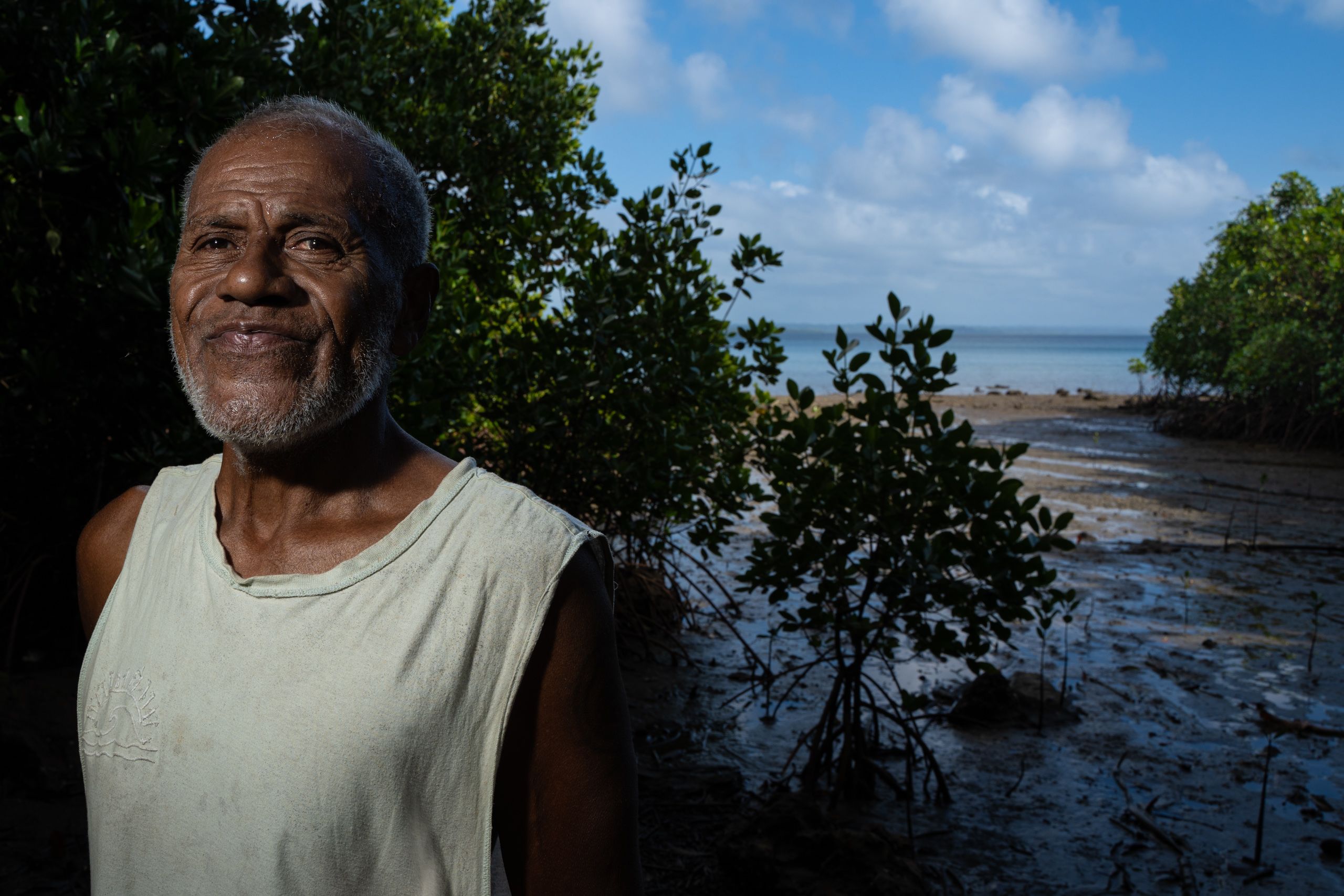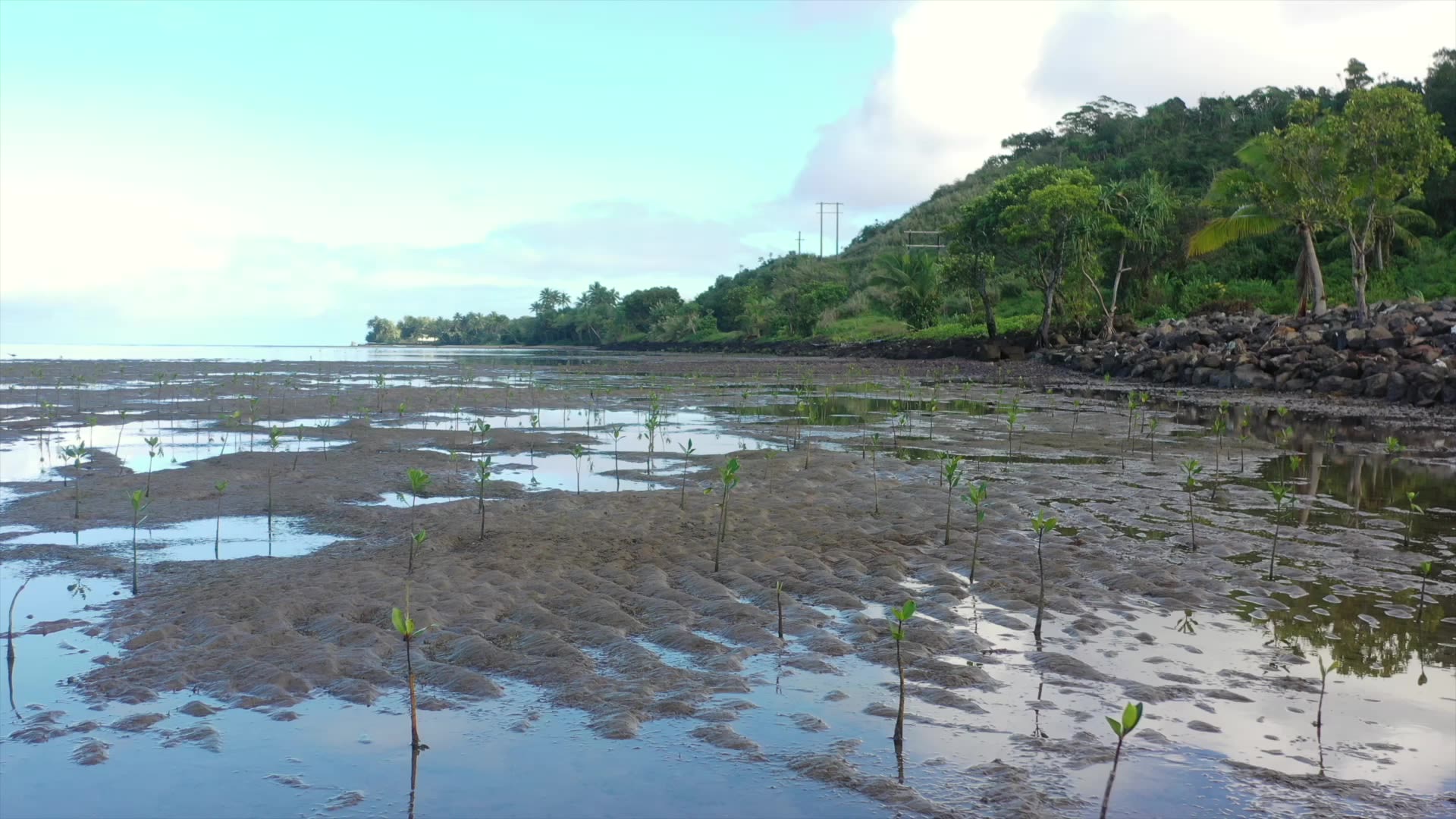
On the outskirts of Vatani village, beneath the shade of mangrove and breadfruit trees, Manueli Cigomi Tueli is on the hunt for seeds.
Most days, Tueli leaves his home to scour the water’s edge to look for mangrove seedlings. These long brown nubs, as thin as pencils, litter the sandy shoreline along this stretch of Fiji’s main island, Viti Levu. Tueli collects them, one by one, and then takes them to a clearing, deep in the bush, where he has created a vibrant mangrove nursery. There, in yellow plastic trays, hundreds of mangrove saplings grow, ready to be planted as Vatani villages’ first line of defense against the rising seas.
Like most Pacific Island nations, Fiji is among one of the world’s most vulnerable countries to climate change, at the mercy of extreme weather events like tropical cyclones and floods. While the Fijian government and other small island nations lobby the industrialized world for help in addressing the consequences of global warming, some residents, like Tueli, are taking climate action into their own hands, before it is too late.
“We have thousands of seeds here,” Tueli says, standing in brackish water close to a mangrove thicket near his home. “These seeds can help prevent climate change and defend our coastal areas.”
In the village of Vatani, in Viti Levu, Fiji, Manueli Cigomi Tueli displays his mangrove nursery.
In the village of Vatani, in Viti Levu, Fiji, Manueli Cigomi Tueli displays his mangrove nursery.
Tueli, a former soldier who was deployed as a United Nations peacekeeper in the Middle East, recently retired to Vatani village, his childhood home. Like his uncle, village headman, Watson Somidra Bole, Tueli has, over the decades, watched the waterline around the village encroach closer, and higher.
Drawing on knowledge passed down generation-by-generation from Tueli’s forefathers, the Naseuvou tribe, Tueli understands the vital role mangrove habitats play in coastal resilience across Fiji. He points to the mangrove’s thick, fibrous roots, anchored deep in the sand, that help protect his village from tidal surges and erosion by slowing down the flow of seawater.

Along the winding road from Fiji’s capital, Suva, to the resort town of Nadi, where rising seas have eaten away at the sandy coastline, neat rows of mangrove saplings can be seen poking through low-tide sands. Some of these fledgling watery forests are part of the Fijian government’s ‘30 Million Trees in 15 Years’ initiative. Since July 2023, the program, run by Fiji’s Ministry of Forestry, has yielded more than 18 million trees and mangroves. The World Bank is also lending a hand by supporting programs in Fiji that enhance wetland protection – including mangrove and seagrass planting. IFC continues to spearhead market standards to grow a viable blue finance market to help safeguard delicate marine ecosystems around the world, including in the South Pacific.
When he is not collecting mangrove seeds, Tueli spends time trying to link up with non-governmental agencies across Viti Levu in the hopes of distributing his trays of mangrove saplings so that other communities across Fiji can benefit from their role as protective barriers.
One mangrove sapling at a time, Tueli is confident in the power of individual action with a shared purpose. “This is my way of helping my community and fighting climate change,” he says.
Mangrove seeds, also called ‘propagules’, germinate while still attached to the parent tree. This unique adaptation allows them to quickly take root once they reach soil or sand.
Mangrove seeds, also called ‘propagules’, germinate while still attached to the parent tree. This unique adaptation allows them to quickly take root once they reach soil or sand.
Published November 2024




